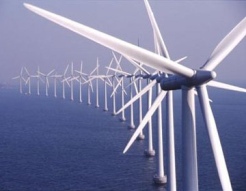Green tariffs lack transparency. Switch anyway.
 Switching to green electricity is a complex decision. You probably get all of your power from the national grid, which makes your electricity exactly the same as everyone else’s. So how can your electricity be greener?
Switching to green electricity is a complex decision. You probably get all of your power from the national grid, which makes your electricity exactly the same as everyone else’s. So how can your electricity be greener?
There are two types of company involved: suppliers and generators. Generators own the power stations, wind farms and other plant that provide electricity to the grid. Suppliers manage retail relationships and must either purchase wholesale electricity from a generator or operate their own generators. In fact, to manage capacity, all suppliers trade in electricity to some extent.
The mix of generation sources determines the quantity of emissions and hence it is the generators that we are trying to change; suppliers are our levers. Pretty much every supplier now offers a green tariff. They work differently and some are more effective levers than others. Three key questions to ask of green tariffs are:
- Does the supplier also cater for non-green tariff customers and ‘allocate’ its renewably generated electricity to a limited number of green tariffs? This is common practice. Some companies – including Npower – are able to provide their green tariff customers with 100% green electricity within their Renewables Obligation (a government requirement to purchase or generate a proportion – 7.9% in 2007/08 – of electricity from renewable sources). The effect of this practice is that switching simply reduces the proportion of renewable energy ‘allocated’ to non-green tariffs and has little or no effect on the overall fuel mix.
- Are carbon offsets used as part of the package? If so, you will have the added complexity of assessing the quality of the offsets before you understand the tariff. If you sign up to British Gas’s new ‘Zero Carbon’ tariff, for example, British Gas will purchase 20% of the electricity you use from renewable sources (12% of which is guaranteed not to go toward their Renewable Obligation). Emissions associated with the other 80% are offset.
- What proportion of the electricity is green? Most green tariffs now claim 100% of electricity is green, but some are under 20%.
If you can afford the premium, opt for a top-end tariff from Good Energy. You can be sure you will be funding new generators. Otherwise, switch to your supplier’s green offering anyway – according to Friends of the Earth less than 1% of households are on a green tariff. Only sheer volume will push the big suppliers beyond their Renewables Obligation.
August 6, 2007 at 5:25 pm
Hey guys you forgot ecotricity. We started the whole green electricity movement here in the UK in 1996 – we’re the world’s first green electricity company and we’re dedicated to building new green generation. So dedicated that we spend £1 on building for every £1 our customers spend on electricity with us – over £400 per year on average. British Gas spend on average £10 per customer per year (and don’t overlook their £80 per year premium for this Zero Carbon nonsense), and Good Energy have never spent a penny in their eight years of existence – so joning them you can’t be sure you will be funding new generators – as your article says – on the contrary, you can be sure you won’t. Cheers.
August 20, 2007 at 12:41 pm
To clarify the difference between Good Energy and Ecotricity, two of the leading specialists in the field:
Good Energy is a ‘pure supplier’. It purchases green electricity from third parties; typically small, independent wind farms. 100% of the electricity in their package is green. The model relies on ‘demonstrating demand’, which should encourage others to build more renewable generators.
Ecotricity is both a supplier and generator. Some of the electricity it supplies is matched by its own windfarms and it purchases the rest on the wholesale market from both renewable and ‘brown’ generators. As Ecotricity takes on new customers, it builds new windfarms. The national fuel mix therefore becomes greener.
If you have faith that investors will respond appropriately to the behaviour of companies like Good Energy in the wholesale market, Good Energy’s 100% promise might look attractive. Otherwise, Ecotricity provide a better guarantee that new generators will be built when you switch.
December 5, 2007 at 2:46 pm
how can u get them into the warter
August 14, 2008 at 9:43 am
Hi could you tell me who has the copy rights of this beautiful picture of the wind farm. I would like to use it for my eco articles and website.
Thanks